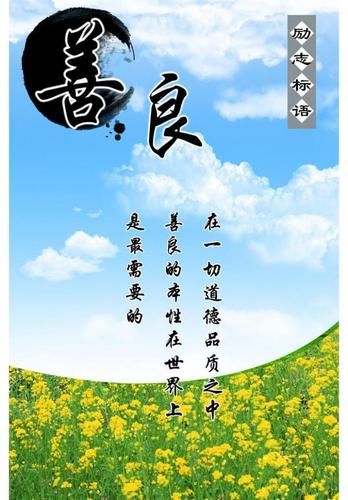
the wild honey suckle的分析
《野金银花》是Freneau在南卡罗莱纳州查尔斯顿散步时,看到一簇幽生的金银花,于是便有感而发,将这首短诗一气呵成。诗人以敏锐的观察力、浅俗的词汇、优美的旋律和清晰的意象,细腻生动地描写了盛开于北美大地不为人们注意的野金银花。
此诗分为两大部分,前两节写景,后两节抒情。写景以抒情为目的,抒情以写景为背景,两部分互为烘托,成为不可分割的整体。诗人以惊喜的目光看到自然界神奇的产物时,心中涌动的是对大自然无限的崇拜之情。如果说“绿荫”指的是未受人类文明侵犯的新大陆处女地的话,那些“美丽的金银花”则应是大自然创作的生命的具体体现。诗人用浅显的文字勾画出一片繁荣祥和的景象,在对生命的赞叹中,流露出返璞归真、崇尚自然的情节,充满了浪漫主义情调和理想主义色彩。
然而,Freneau的过人之处,不仅在于他具有诗人的敏感,而且在于他同时具有哲人的睿智。诗人先是描写外界景物,然后直接联系到自己,联系到人类,并将人与自然融为一体,以自然规律来感染读者。所以,诗人从第三小节开始笔锋一转。显然,诗人对大自然的神奇力量由崇拜转为迷惑,怀着惋惜忐忑的心情联想到生命的无奈和大自然的无情,开始了对生
命本质的思考。因此,在第四小节,诗人对主题进一步挖掘。至此,Freneau借助金银花的荣枯阐述了自己毫不掩饰的自然观:万物有生必有死,有荣必有枯,花开花落,四季转换乃自然界的规律,这一规律是不以人的意志为转移的,是人类无法抗拒的。自然界万物的生生息息乃自然的神力所造就,是人类无法左右的。因而,对于花的荣枯,人的生死,人类大可不必为之伤情。正如中国的一句古语,人“生不带来死不带去”。诗人高歌:“不曾拥有,何曾失去”,足以说明诗人对生命本质有了明确的认识后,走出困惑,最终达到一种豁达乐观的境界。
Freneau以他对美洲大地的深厚感情和洞若幽微的感受力,通过对金银花的生长环境及其盛衰变迁的描述,抒发了他对短暂人生的感叹,使本诗在清丽的意境和浓郁的美洲大地的乡土气息中加入一层哲理的思考。诗歌的最后四句,似对花说,又似诗人自然自语,令人颇为回味,乃整首诗歌的点睛之笔。人无异于花草,两者都发端于“一块共同的泥土”,并无法回避“一把黄土葬其身”的最终结局。美是那么短暂,人生或许亦莫过于此吧。言尽而意犹存,让人怅然若失。诗人记录了他对生命的感触,揭示生命的本质,借此提醒读者,生命因其短暂而宝贵无价。虽然生命只是从生到死的一个过程,但依然有许多令人心快的绮丽风光,有许多值得人们为之奋斗拼搏的美好事物。珍惜生命才是真正地享受生命。尽
管生命是有限的,却要在这有限的生命中,尽可能绽放它,满怀热情,悟彻人生的实质。就如同任何一种像野金银花的花卉不会因为最终的凋零而拒绝开放,人类也不应该因为生命最终的结局是死亡就放弃对生命的珍爱。
这首诗中,Freneau以抒情的色调描绘和讴歌了大自然的瑰丽,同时又揭示出自然界的萧杀冷酷和生命无奈短暂的本质;既有浪漫主义情调,又不乏意象主义的意味,的确不失为一首上乘之作。
英文赏析:
The short lyric was written in 1786. Freneau was inspired by the beauty of the wild honey suckle when he was walking at Chaeleston, South Carolina. It was virtually unread in the poet’s lifetime, yet it derves a place among major English and American works of poetry of that time. This is one of the most quoted works of Freneau. Generally speaking, it is the best of Freneau’s poems, and the best poem on nature before the appearance of the vers of William Cullen Bryant, William Wordsworth, and Ralph Waldo Emerson’s The Rhodora. But unlike tho early writers who turned to look for themes outside Americ
a, Freneau rooted his poem on this piece of land. He is one of the few early writers who eulogize the country.
Before Freneau there had been some American poets who, however, wrote mostly on the religious theme and either in style or structurally they imitated English poets. Freneau, the first American-born poet, was one of the earliest who cast their eyes over the natural surroundings of the New Continent and American subject matter.
As is displayed in this poem, honeysuckle, instead of ro of daffodil became the object of depiction; it is “wild” just to convey the fresh perception of the natural scenes on the new continent. The flowers, similar to the early Puritan ttlers, ud to believe they were the lects of God to be arranged on the abundant land, but now have to wake up from fantasy and be more respectful to natural law. Time is constant but the time of a life is short; any favor is relative but change is absolute; with or without the awareness, nature develops; flowers were born, blossomed and declined to repo, and human beings would exist in exactly the same way. A philosophical meditation is indicated by the description of the fate of a trivial wild plant.
A quintesntially Romantic poet, Freneau demonstrated the best of his poetic art in the melodious lyrics on Nature’s beauty. In this short poem about a flower, the poet describes his thoughts over some much more grand topics including religion and life in general. The wild honey suckle is, in the poet’s eye, no longer a common flower. To some extent, Freneau’s poem is a longer expounding of William Blake’s poem: “To e the world in a grain of sand,/And a heaven in a wild flower,/Hold infinity in the palm of your hand,/And eternity in an hour.”
In the first two stanzas, to start with, Freneau devoted more attention to the environment of the flower in which he found it than to the appearance of the flower per . He commented on the cluded nature of the place where the honey suckle grew, drawing a conclusion that it was due to Nature’s protectiveness that the flower was able to lead a peaceful life free from men’s disturbance and destruction.
But the next stanza immediately changed the tone from silent admiration and appreciation to outright lamentation over the “future’s doom” of the flower --- even Nature
was unable to save the flower from its death. Actually no flower, or no living being, can escape. Not even the flowers that ud to bloom in Eden. Thus from the flower in nature the poet started to ponder over the fate of man, who was bound to fall from his innocence and suffer from the despair of death as the result to his exile from Paradi. Just as kindly as nourished and protected the honey suckle in spring and summer, Nature will destroy ruthlessly the flower with its autumn and winter weapons.
Following the traditional European model, the lyric is written in regular 6-line tetrameter stanzas, rhyming “ababcc”, and sounds just like music. But in order to accord with the change in tone and topic in Stanza 3, the rhythmic pattern is varied. Different from the rest the poem which is written in smooth iambic tetrameter lines, the third line of the stanza --- “They died” --- begins with a “spondee” (two stresd beats in a row) and, after forcing the reader to pau (the dash), continues in a highly irregular rhythm with an intensification of stresd beats. The purpo is obvious: the speaker wants to drive the horrible message home, to let the reader feel the impact acutely. But as we progress into the last stanza, when a more mature view of life and death is adopted, the rhythms are re
stored to the original regularity as the tone assumes a tempered renity grown out of experience.
